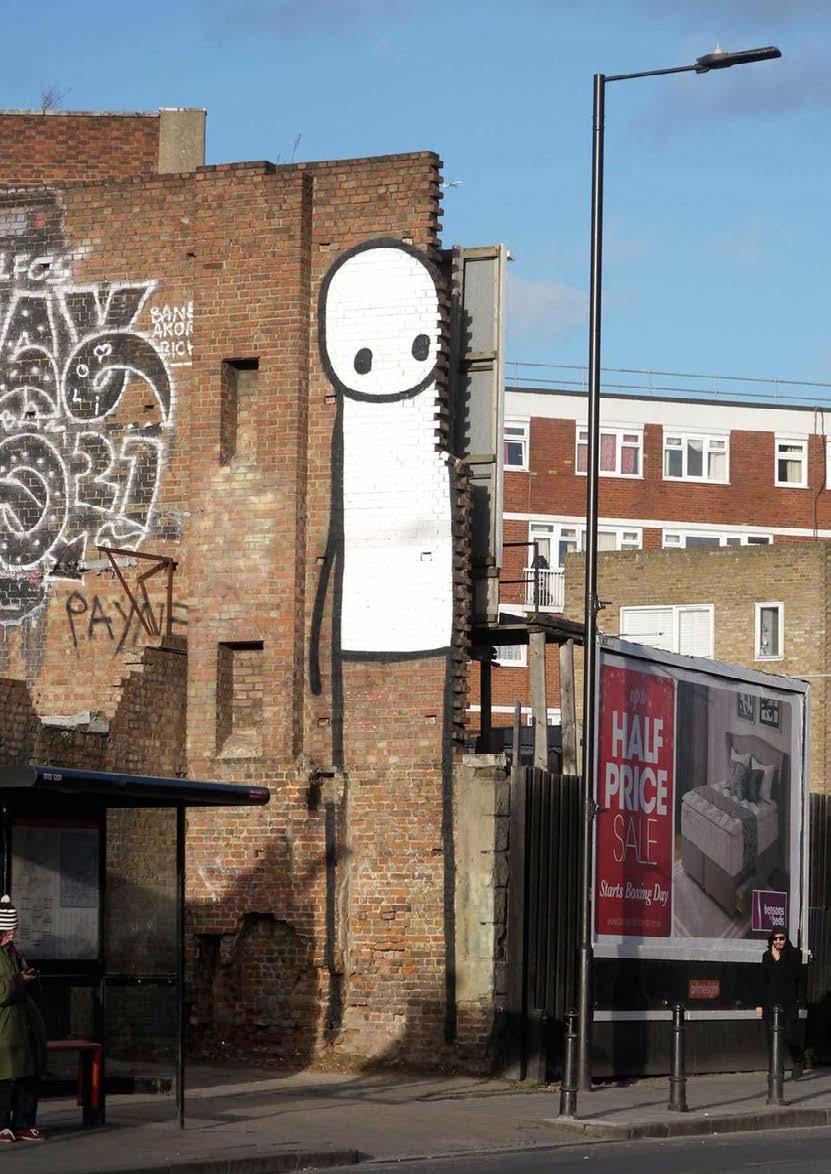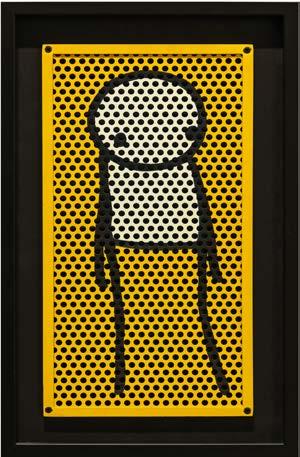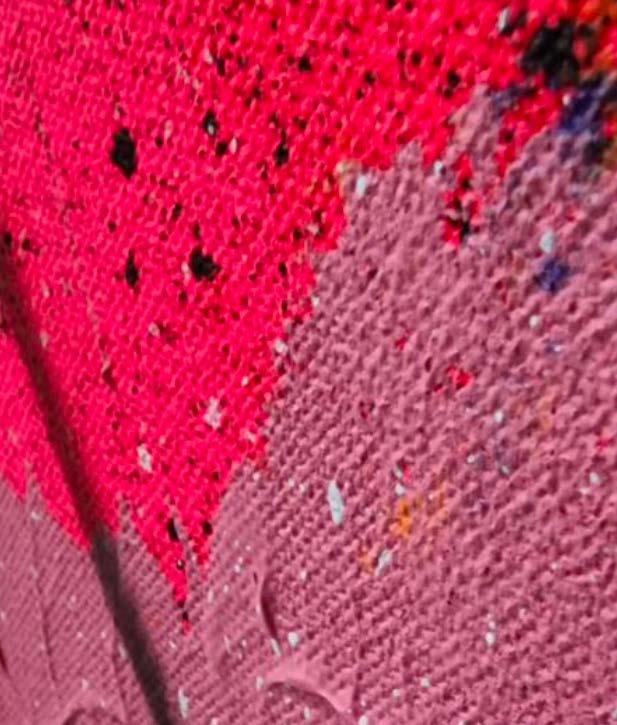
3 minute read
I ST K
from STREET LIFE
BRITISH B.1979
Born in 1979 in the United Kingdom, little is known about STIK. The artist remains anonymous, revealing extremely little about his upbringing and personal life. Of the little information that is publicly available, the graffiti artist has only acknowledged his lack of artistic training and his experience of homelessness in his early 20s.
It was during STIK’s time living in homeless shelters that he began painting on the streets of London. Creating graffiti first in the Hackney area, STIK learned from his contemporaries, developing his distinct style and honing his craft. With the support of his friends and the wider Hackney community, STIK managed to access independent housing and continue his journey towards becoming a full-time artist. Feeling indebted to those who assisted him, STIK reportedly stated that ‘street art was [his] way of giving back’. Each of his works, therefore, are created with the community in mind, as a gift to the public who rallied to help him.
Ever since STIK’s iconic murals continued to appear across the United Kingdom. In 2010 following the attempted Islamic Extremist attack on Lars Vilks - a Swedish cartoonist who depicted the Prophet Muhammed as a dog - STIK created A Couple Hold Hands in the Street ; a work which has now become one of his best-known pieces. Depicting a Muslim woman holding hands with one of STIK’s traditional figures, the mural was immediately embraced by the Muslim community and in 2017, it was voted the UK’s 17th favourite artwork in a Guardian poll.
By 2011, STIK had become an established artist, with his collectors including celebrity musicians Brian May and Bono. That same year, the graffiti artist had his first solo show at Imitate Modern Gallery in London’s West End.
In 2012, STIK collaborated with Dulwich Picture Gallery, recreating Old Master paintings in his own style, and establishing himself as a household name. Now successful enough to turn towards charitable efforts, in 2013, STIK ran an initiative with The Big Issue, creating a bespoke poster to be sold with the magazine to raise money. This is just one of the many initiatives the artist has joined in aid of supporting the fight against homelessness.
The next year, STIK painted his monumental mural, Big Mother , in the Charles Hocking Estate in Acton, London. Painted on the side of a social housing block that was due to be demolished, STIK depicted a mother and child solemnly gazing down at the houses below. The mural became a symbol of protest against the destruction of social housing and through the building’s subsequent demolition, the message of the piece was reinforced in the minds of the local community.
Eight years later, STIK continues to anonymously paint, produce prints and create murals all around the globe. Celebrating the love and community that helped him flourish both personally and professionally, the artist remains dedicated to philanthropy, raising money for causes close to his heart.


Fu T U R A
“Graffiti was a way for me to exist. I wanted to world to know my name. I wanted to be somebody.”
Born in Manhattan, New York, in 1955, FUTURA, the pseudonym of Lenny McGurr, is an American graffiti artist who learned his craft in the same way as many of his peers: by painting on the exterior of subway cars as a teenager in the early 1970s. Considered one of the progenitors of graffiti art, he was one of 70s New York’s graffiti all-stars who crossed over into the 1980s New York art scene with his otherworldly works, which fused graffiti with Abstract Expressionism.
In the early years, McGurr was associated with a series of infamous graffiti crews, including 3YB, CIA, FBI, Interpol and KGB. He signed his abstract works with the handle FUTURA2000, inspired by Stanley Kubrick’s film 2001: A Space Odyssey and Alvin Toffler’s book Future Shock .
In 1981, McGurr began to experiment with working on canvas, which led him to exhibit alongside fellow street artists Keith Haring, Jean-Michel Basquiat and Kenny Scharf. The following year, he organised his first solo show at the Fun Gallery in Manhattan’s East Village, which led to a succession of national and international exhibitions.
It was during this time that McGurr struck up a friendship with the British punk rock band The Clash. He accepted their invitation to join them on stage and paint graffiti backdrops as the band played, eventually joining them on tour. He designed the sleeve for the band’s This is Radio Clash single and, in 1982, painstakingly handwrote the sleeve notes and lyrics sheet for the 1982 album Combat Rock.
The artist’s Pointman series of works are among his most recognisable. Featuring an alien-like character which he began conceptualising in the 70s and 80s, the figure became famous when the record label MOWAX commissioned FUTURA to create the sleeve image for Unkle’s 1998 debut album, Psyence Fiction . Pointman has since made countless other appearances in McGurr’s work.
In the decades that followed, McGurr preferred to work just outside of the art world, as a graphic designer, album-art aficionado, fashion collaborator – with Nike, Louis Vuitton and Comme des Gar ç ons, among others – and creating his own brand, Futura Laboratories. Living and working in New York today, it is only recently that he has returned to the limelight, with two exhibitions in New York that have seen him embraced by the art world once again. His first shows in his hometown for more than 30 years, ‘Futura 2020’ at the Eric Firestone Gallery in New York was quickly followed by ‘Tarperstries’ at the gallery’s East Hampton outpost in 2022.












